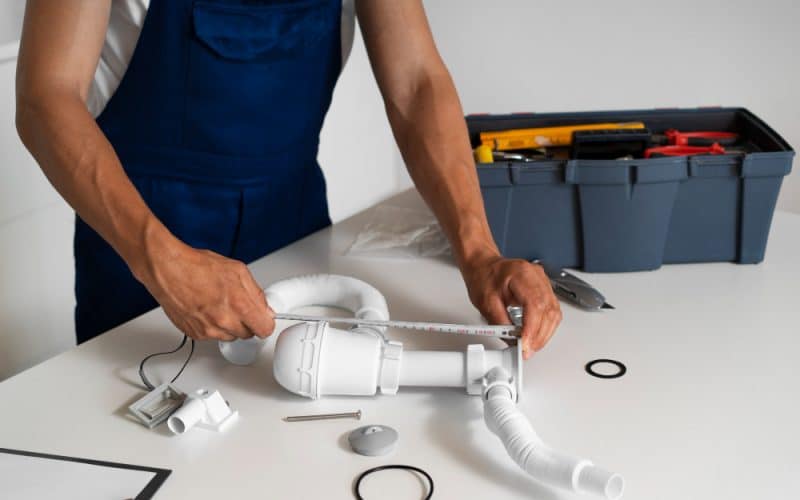If your whole house filtration system is not working, there may be several reasons behind it. These issues could be due to clogged filters, incorrect installation, or a malfunctioning system.
To begin resolution, first check your filter. It may need cleaning or replacement as a buildup of pollutants might inhibit function. If the problem persists, inspect the installation of the system. Sometimes simple mistakes could cause malfunction. Consult your installation manual or the assistance of professionals Filtap.com.au to verify the proper setup.
Alternatively, the issue may stem from a mechanical failure. If cleaning the filter or verifying the installation hasn’t resolved your problem, you should seek professional help. Using advanced diagnostic tools, a professional can pinpoint and fix the source of the problem.
In conclusion, while there are initial steps you can take to resolve issues yourself, a professional will provide the most reliable solution. Timely action is essential as it prevents potential damage to your water pipes or appliances, safeguarding the quality of your water.
Identify the Problem
The functioning of your whole house filtration system depends on several factors: the quality of your water supply, the condition of your pipes and filters, and the correct set-up and operation of the system itself. If your system isn’t working properly, it’s important to identify the cause before proceeding.
The Importance of Water Testing
As noted by USA Today, about 85% of American homes are supplied with hard water. This high mineral content can clog up your filters more frequently than anticipated. In this case, it’s necessary to inspect your water supply by conducting a thorough water test – you need to identify what contaminants and minerals are present in your water to determine if they’re impeding your filtration system.
Check the Pipes and Filters
Pipes play a significant role in delivering clean filtered water throughout your home. You should examine the condition of your pipes regularly. Look for any signs of rusting or leakage as these problems can affect the performance of your filtration system. Your filter’s condition is also vital: ensure they are not overdue for replacement or clogged causing serious obstruction to water flow.
Consider System Operation
If water tests and physical inspections don’t reveal an obvious issue, assess the operation of the filtration system itself. Ensure that it has been installed correctly and operating as per manufacturer’s guidelines. You might need to consult with a professional for this part if you are unfamiliar with how a filtration system should operate.
Inspect the Filtration System
If you’re encountering problems with your whole house filtration system, start by examining the system carefully. Pay attention to unusual noises, leaks, or any signs of damage that may indicate a malfunction.
Check for possible blockages in the inlet and outlet valves. Any debris or sediment build-up can obstruct the water flow, causing the filtration process to lag or stop entirely.
- Filtration Media: Determine whether it needs to be replaced. The efficiency of your filtration system depends largely on its condition.
- Pressure Valve: Test to ensure it is operating properly. Inconsistent pressure can disrupt the effectiveness of the filtration system.
- Electricity Supply: Investigate any power-related issues. No electricity can make your system unresponsive.
You should also check the settings of your filtration controller. Incorrect settings might be the reason why your filtration system is underperforming. Therefore, ensure they align with your specific household requirements.
If after conducting these checks and fixes your filtration system doesn’t resume normal function, then it might be time to call in expert help. This step ensures you are not inadvertently causing more harm than good while trying to rectify an internal issue.
Checking Water Pressure
The functionality of your whole house filtration system can be significantly influenced by the water pressure. Checking the water pressure is, therefore, a crucial first step to detecting a malfunction.
Signs of Low Water Pressure
If your system isn’t working properly, you may notice a reduction in flow from faucets and showerheads. This could indicate low pressure in the filtration system. If this is the case, immediate action is necessary.
Testing Water Pressure
You can conduct a simple test for water pressure with a home testing gauge available from most hardware or home improvement stores. This gadget will give an immediate reading which you can compare with the manufacturer’s specified ranges.
Adjusting Water Pressure
If the readings display low pressure, there might be a need to adjust the system regulator. Ensure to turn it slowly while monitoring the gauge readings until you reach the appropriate range.
Professional Inspection
If adjusting the regulator doesn’t rectify the issue or if you’re uncertain about the processes mentioned above, enlist the services of a professional. Remember, negligence could potentially worsen your situation or pose more risks.
The global water purifier market size was valued at USD 30 billion in 2018 showcasing how important these systems have become to provide clean and safe water worldwide. Therefore, maintaining them appropriately should be given priority.
Dealing with Bad Smell or Taste
If you’re noticing a bad smell or unpleasant taste from your water, it could indicate an issue with your whole house filtration system. This can impair the quality of the water you consume and use daily.
To tackle this problem, follow these steps:
- Run a quick system check: Examine each component to ensure the issue isn’t a basic operational fault.
- Test the water: Use a home testing kit to identify any unusual contaminants that may be affecting taste and smell.
- Clean or replace filters: Over time, filters can clog and fail to efficiently remove contaminants, contributing to bad smell/taste.
In 2021, 5% of households reported issues with their water filtration systems just because of dirty filters. Cleaning or changing them more frequently prevents most distasteful experiences from your drinking water.
Should these steps not solve the problem, don’t hesitate to consult with a professional technician. They can provide expert diagnosis and efficient solutions for your filtration system issues.
Addressing Stuck Filter Housing
Experiencing trouble with your whole house filtration system can be daunting. An intricate issue that homeowners often face is stuck filter housing. This occurs when the filter casing becomes too challenging to unfasten, hindering regular maintenance and function of the system.
To tackle this, firstly, halt water supply to the filtration setup. Shut down the system, depressurize it and carefully examine the housing situation. A stuck housing often occurs due to over-tightening, mineral deposition or temperature changes.
| Common Causes | Solutions |
| Over-Tightening | Use a specific filter wrench |
| Mineral Deposition | Clean regularly with vinegar |
| Temperature Changes | Maintain a constant ambient condition |
| The global water filter market size was valued at approximately $1 billion in 2020 and is expected to expand at a compound annual growth rate (CAGR). | |
Note: You shouldn’t exert too much force when handling components. If none of these solutions yield success, contacting a professional may be a sensible measure.
Replacing the Water Filter
If your whole house filtration system is not working, the culprit might be an overused water filter. Essentially, a clogged or worn-out filter can hinder the performance of your system, leading to unfiltered or poorly filtered water.
- Identify the Filter Type: Consider your current filter type before making a purchase. Check your system’s specifications or consult your owner’s manual to determine the exact model you need.
- Purchasing a New Filter: Once you’ve identified the type, purchase a new filter from a reputable supplier. Make sure it matches your system’s specifications perfectly.
- Powering Down Your System: Ensure to shut off any power supply to your house filtration system before replacing the filter. Safety should always be a priority.
After acquiring the right filter and turning off your system, remove the old one. It’s usually situated in a cylinder on the unit’s inlet pipe. Carefully open this cylinder and replace it with the new filter.
Ensure to adhere strictly to the manufacturer’s instructions while doing this. Also, remember to put back all components properly after installing the replacement. Doing so will help maintain optimal functioning of your whole house filtration system.
Pressurizing the Water System
If you’re facing issues with your whole house filtration system, one underlying cause could be pressure problems within the water system. Many homeowners encounter difficulties with their filtration systems due to an improper balance of pressurization. Hence, correctly pressurizing your water system is a critical step towards resolving this issue.
You can begin by checking the pressure tank. A noticeable characteristic of a poor balance in pressurization is if the water isn’t constantly running through all the taps. This generally indicates a pressure tank failure, which hinders your filtration system from effectively removing contaminants.
- Inspect the Pressure Gauge: If the needle on your pressure gauge is stagnant or shows an unexpected reading, there may be pressure issues. You should consult your manual or call professional help to target and resolve this issue.
- Examine Pre Charged Pressure Tanks: For precharged tanks, improper function may occur due to a failure in maintaining air change. Check the tank’s air charge with a tire gauge and make sure it’s set to 2 PSI below the pump cut-on pressure.
If simply recalibrating doesn’t fix your problem, it could indicate that a more serious issue exists. In such cases, it could mean that parts within your filtration system require replacing or repairing.
Therefore, maintaining correct pressurization in the water system is vital for optimal filtration operation. It increases efficiency while ensuring you have clean, safe water.






